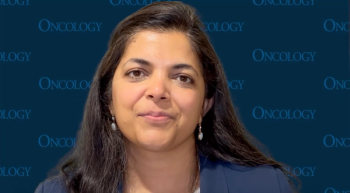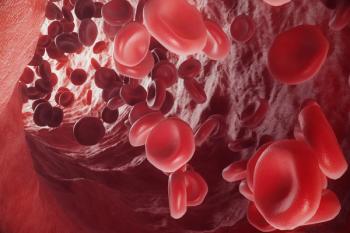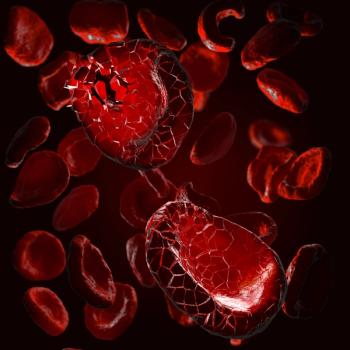
Treatment Strategies in Primary Mediastinal B-Cell Lymphoma
In this interview, we discuss the biology and the therapeutic strategies for primary mediastinal B-cell lymphoma.
As part of our coverage of the American Society of Hematology (ASH) Annual Meeting & Exposition held December 9–12 in Atlanta, we are speaking with Kieron Dunleavy, MD, about the latest strategies to treat primary mediastinal B-cell lymphoma (PMBCL). Dr. Dunleavy is a professor of medicine and the director of the lymphoma program at George Washington University Cancer Center in Washington, DC. He is giving a talk titled, “Primary Mediastinal B-Cell Lymphoma: Biology and Evolving Therapeutic Strategies” during an education session at the meeting.
Cancer Network: First, can you tell us about PMBCL? Is this a rare type of lymphoma, and what do we know about the biology of this hematologic malignancy?
Dr. Dunleavy: PMBCL is a very rare type of non-Hodgkin lymphoma. It makes up about 2% of all non-Hodgkin lymphomas and has historically been considered a subtype of diffuse large B-cell lymphoma, which is the most common type of non-Hodgkin lymphoma. But if you look at its biology closely, it’s very different than the other subtypes of diffuse large B-cell lymphoma, which are the activated B cell (ABC) or germinal center B cell (GCB) subtypes. In fact, its biology is much closer to that of classic Hodgkin lymphoma. It shares about a third of its genes with classic Hodgkin lymphoma, which is interesting because most patients with PMBCL are women and they are usually adolescents and young adults, just like you see with the most common type of Hodgkin lymphoma, nodular sclerosing Hodgkin lymphoma.
Cancer Network: What is the prognosis for patients diagnosed with PMBCL, and what are the current treatment options?
Dr. Dunleavy: The prognosis for PMBCL is very good. Most patients are cured of their disease. One of the challenges is that standard treatments in the past have included chemotherapy followed by mediastinal radiation. And while those approaches have been very curative, this is a very young population and predominantly female, so long-term toxicity of mediastinal radiation is a very important consideration when selecting upfront therapies. The R-CHOP (cyclophosphamide, doxorubicin, vincristine, and prednisone, plus rituximab) regimen is the most commonly used in PMBCL, and while it is very effective in this disease, especially in localized cases, in almost all studies that have looked at R-CHOP in this disease, the majority of patients have received mediastinal radiation treatment. An alternative approach is an intermediate-intensity regimen of dose-adjusted EPOCH-R (etoposide, prednisone, vincristine, cyclophosphamide, and doxorubicin, plus rituximab). This has been studied in 51 patients with PMBCL in a prospective study. No radiation was administered as part of the treatment and just 2 out of 51 patients required mediastinal radiation; the event-free survival rate was over 90%.
Recently, there was a study
Cancer Network: Is there anything that we’ve learned about the biology and clinical course of this disease recently that is informing new treatment strategies?
Dr. Dunleavy: Yes, over the last few years we have learned a lot about the biology of PMBCL. A significant proportion of these patients have got translocations or aberrations in chromosome 9p24, which is associated with upregulation of certain pathways like the JAK/STAT pathway as well as programmed death ligand 1 (PD-L1), and there are inhibitors and antibodies that are specific for these pathways that are in development for PMBCL. At ASH, there will be an update on pembrolizumab, which is an antibody to PD-L1 that is being studied in PMBCL and has shown good efficacy so far. There are JAK/STAT inhibitors in development. There is increased expression usually of CD30 in PMBCL, so brentuximab vedotin has been studied in this disease. We will hear a lot about CAR T cells, specifically CD19 CAR T cells, and the numbers are small, but there have been some very good responses in patients with PMBCL, so we’ll hear some updates on that at ASH.
Cancer Network:Thank you so much for joining us today, Dr. Dunleavy, and enjoy the meeting.
Dr. Dunleavy: Thank you.
Newsletter
Stay up to date on recent advances in the multidisciplinary approach to cancer.
















































































